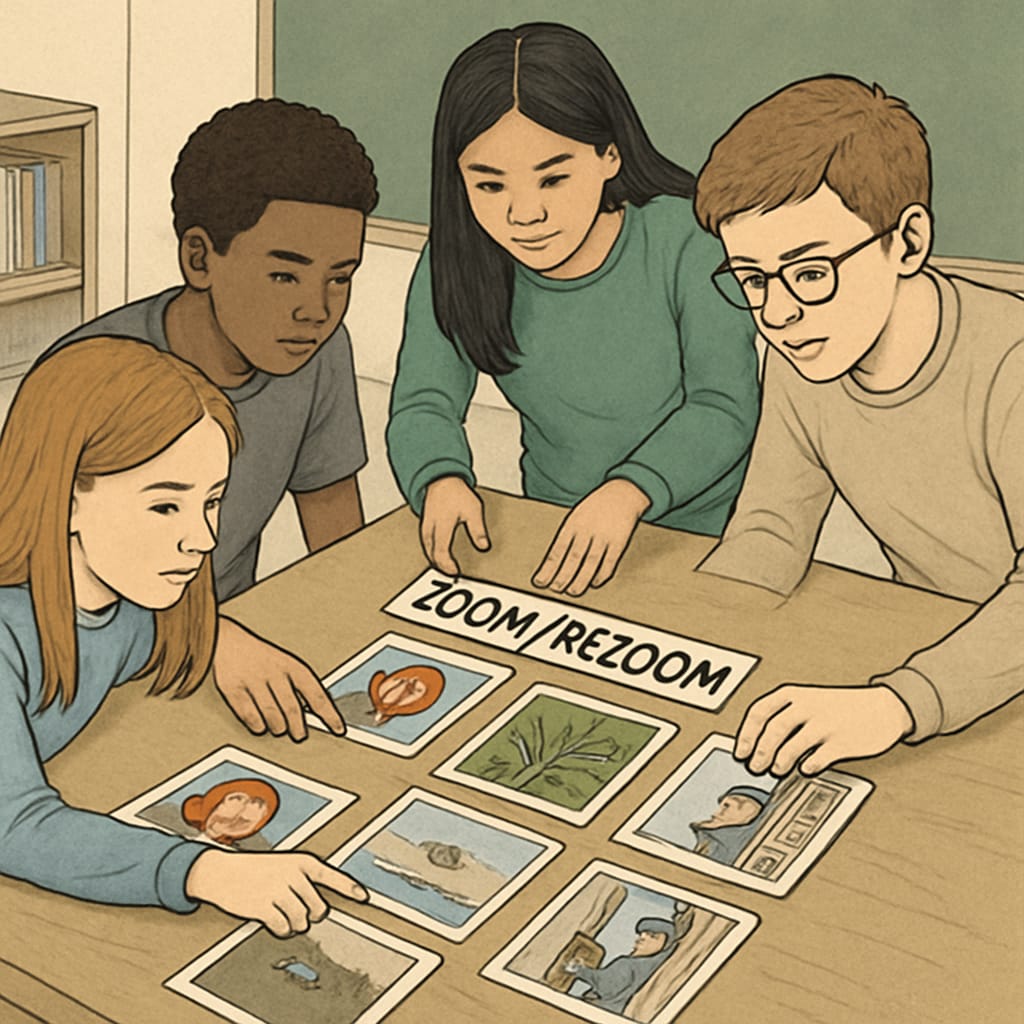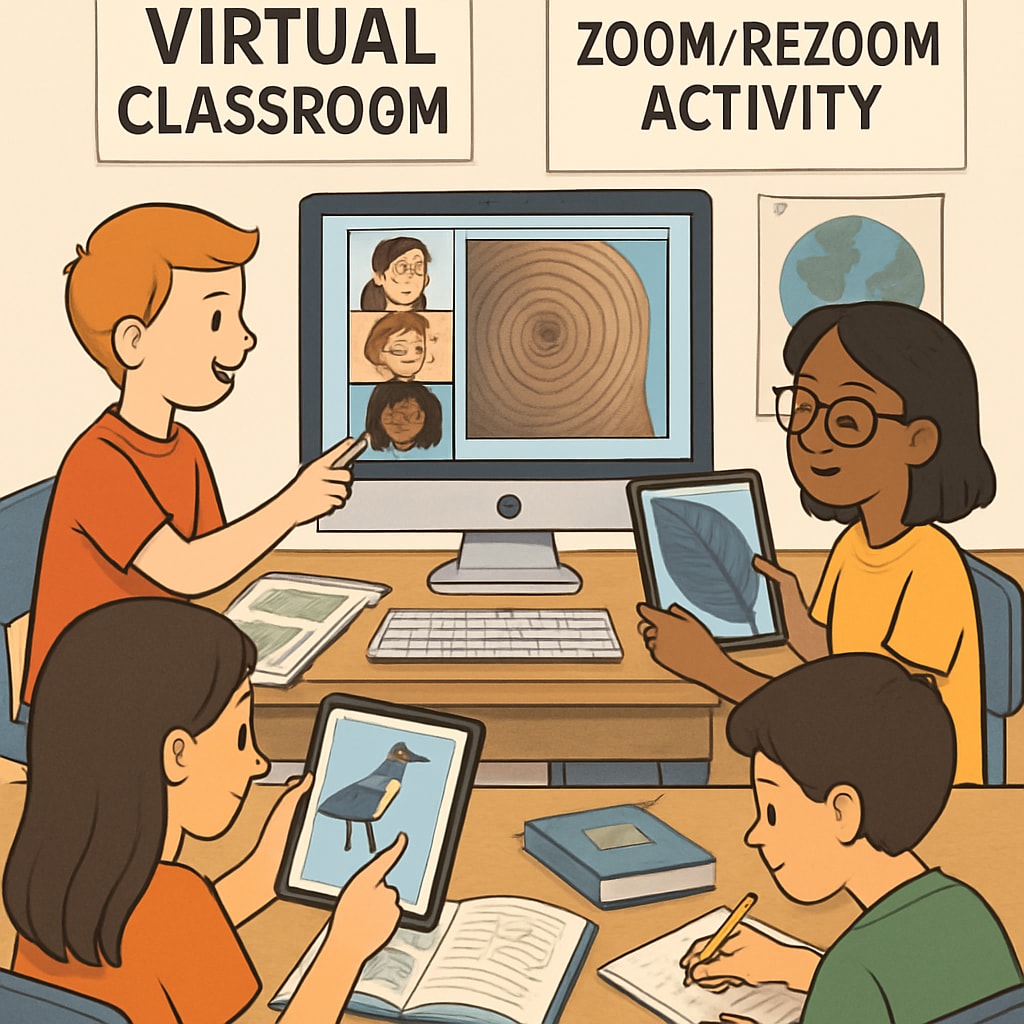Zoom/ReZoom activities are becoming an increasingly popular tool in K12 education for fostering structured engagement and promoting deep learning. These activities, which challenge students to collaborate and organize information sequentially, are particularly effective in boosting participation and critical thinking. In this article, we will explore the significance of Zoom/ReZoom activities, analyze their impact on student learning outcomes, and provide practical strategies for integrating them into digital classrooms.
Understanding Zoom/ReZoom Activities
Zoom/ReZoom activities are interactive exercises designed to teach students the importance of sequencing and teamwork. Based on the books “Zoom” and “ReZoom” by Istvan Banyai, these activities involve arranging a series of images or concepts in the correct order to reveal a larger narrative or pattern. The exercises encourage students to think critically, communicate effectively, and work collaboratively to solve problems. For example, in a Zoom activity, students might start with a close-up image and gradually sequence zoomed-out perspectives to uncover a broader context.

Benefits of Structured Engagement in Education
Structured engagement, such as that provided by Zoom/ReZoom activities, has been shown to enhance learning outcomes in several ways:
- Improved collaboration skills: Students learn to work together, share ideas, and respect diverse perspectives.
- Enhanced critical thinking: Sequencing challenges require logical reasoning and problem-solving abilities.
- Deep learning: By connecting smaller details to a larger narrative, students develop a richer understanding of the subject matter.
- Increased participation: The interactive nature of these activities keeps students engaged and actively involved in the learning process.
According to Wikipedia’s overview of collaborative learning, such activities also foster social and emotional growth by encouraging teamwork and empathy.
Integrating Zoom/ReZoom Activities in Digital Classrooms
In today’s digital learning environments, educators can adapt Zoom/ReZoom activities to virtual platforms for seamless integration. Here are some practical tips:
- Use digital tools: Platforms like Google Slides or Jamboard can help students collaborate and arrange images in real-time.
- Break students into small groups: Assign smaller teams to work on parts of the sequence, then combine their efforts for the final solution.
- Provide clear instructions: Ensure that students understand the goals and mechanics of the activity before starting.
- Encourage reflection: After completing the activity, ask students to discuss their strategies and what they learned.
Additionally, educators can explore resources like Britannica’s insights on problem-solving to design more effective exercises.

Overcoming Challenges in Implementation
While Zoom/ReZoom activities offer substantial benefits, educators may face challenges in their implementation, particularly in digital settings. Common obstacles include technical difficulties, lack of access to digital tools, or varying levels of student engagement. To address these issues:
- Prepare in advance: Test digital tools and ensure students have access before starting the activity.
- Differentiate tasks: Adapt the activity’s complexity to suit students’ skill levels and learning needs.
- Monitor progress: Check in with student groups regularly to provide support and ensure active participation.
By proactively addressing potential challenges, educators can maximize the effectiveness of Zoom/ReZoom activities in fostering meaningful learning experiences.
Conclusion: Unlocking Potential Through Structured Learning
Zoom/ReZoom activities exemplify the power of structured engagement in K12 education. By challenging students to sequence information collaboratively, these activities promote critical thinking, teamwork, and deep learning. When integrated thoughtfully into both traditional and digital classrooms, they can transform the way students interact with educational content. As educators continue to explore innovative teaching strategies, Zoom/ReZoom activities represent a valuable tool for fostering active and meaningful participation in the learning process.
Readability guidance: This article uses concise paragraphs, lists to summarize key points, and carefully placed transition words to enhance readability. The structured layout ensures that readers can easily follow the discussion and apply the strategies in their own classrooms.


